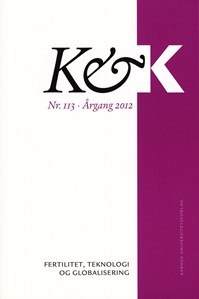Rural angst. "Deliverance" og det brutale møde med det postindustrielle Amerikas efterladenskaber
DOI:
https://doi.org/10.7146/kok.v40i113.15725Nøgleord:
backwoods horror, survivalism, Appalachia, vigilantism, frontier, hillbillies, Americana, (Post-)Industrial Revolution, War on Poverty, Environmental DestructionResumé
RURAL FEAR | The article presents a reading of Joh n Boorman’s classic movie Deliverance (1972) (based on the 1970 debut novel by James Dickey) that interprets the narrative in relation tospecific points of modern American history and popular culture. The reading opposes the most common interpretation of Deliverance as a story about a search for a lost masculinity, and suggests that the story about the four Atlanta suburbanites’ dramatic weekend-trip down the Cahulawassee River should be seen as a violent confrontation between the industrial revolution represented by the early mining adventures in the Appalachian region, and the post-industrial revolution represented by the
new economy of immaterial labour. In this perspective, what the main characters experience are the consequences of the cultural and social violence that the post-industrial revolution exerts on a landscape and its inhabitants, which were essential to the industrial revolution. Rather than encountering the beautiful and untouched American nature like some modern-day frontier men, they venture on a journey into a highly contested political landscape steeped in antagonisms reminiscent of those that characterised the encounter between the frontier men and the Native Americans in the 18th and 19th century. In conclusion, the article claims that Deliverance constitutes a genre defining work
for so-called “backwoods horror”, a genre that has experienced a new heyday in the last decade.
Downloads
Publiceret
2012-06-20
Citation/Eksport
Lillemose, J., & Meyhoff, K. W. (2012). Rural angst. "Deliverance" og det brutale møde med det postindustrielle Amerikas efterladenskaber. K&K - Kultur Og Klasse, 40(113), 133–156. https://doi.org/10.7146/kok.v40i113.15725
Nummer
Sektion
Artikler
Licens
Tidsskriftet følger dansk ophavsret.





